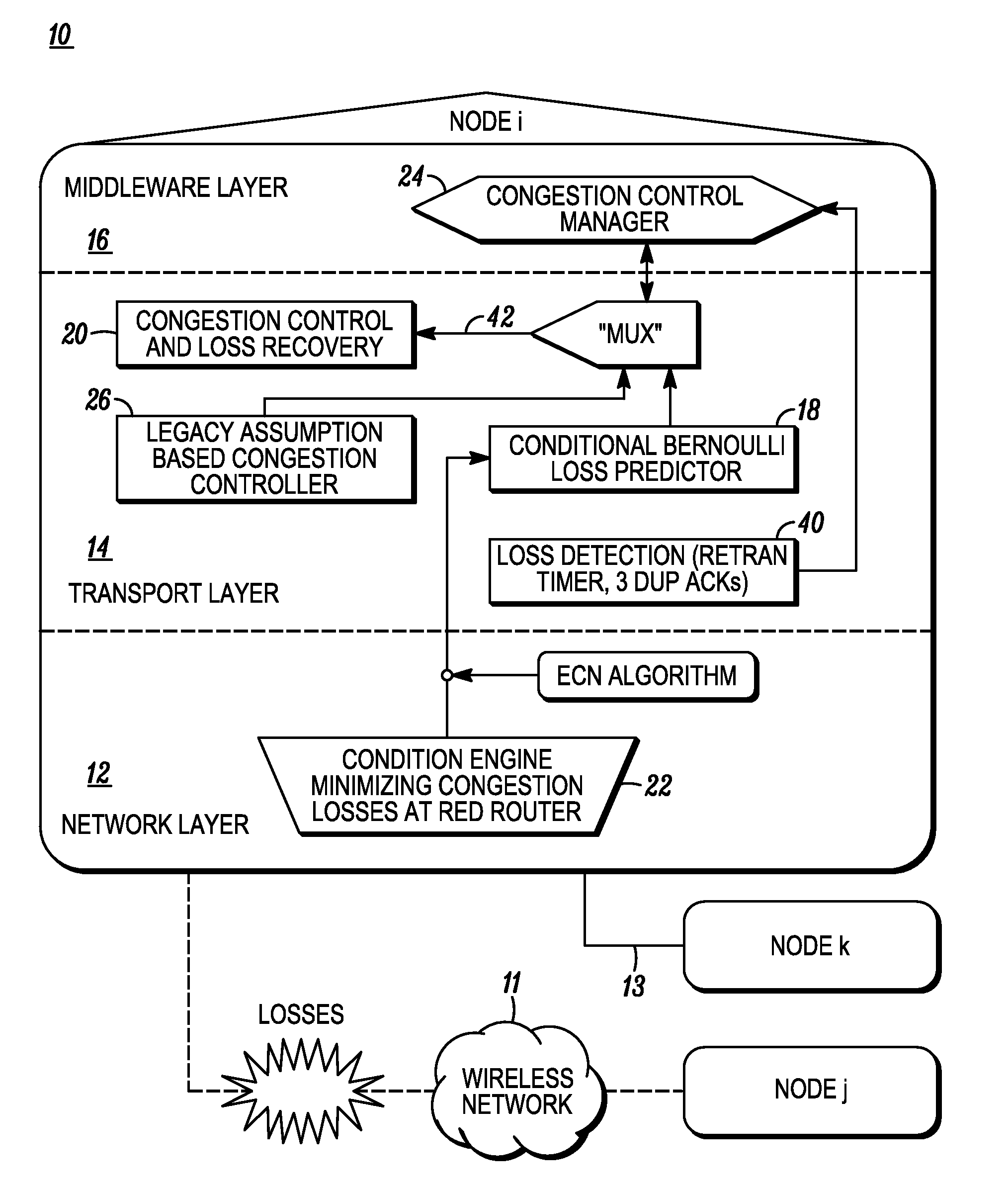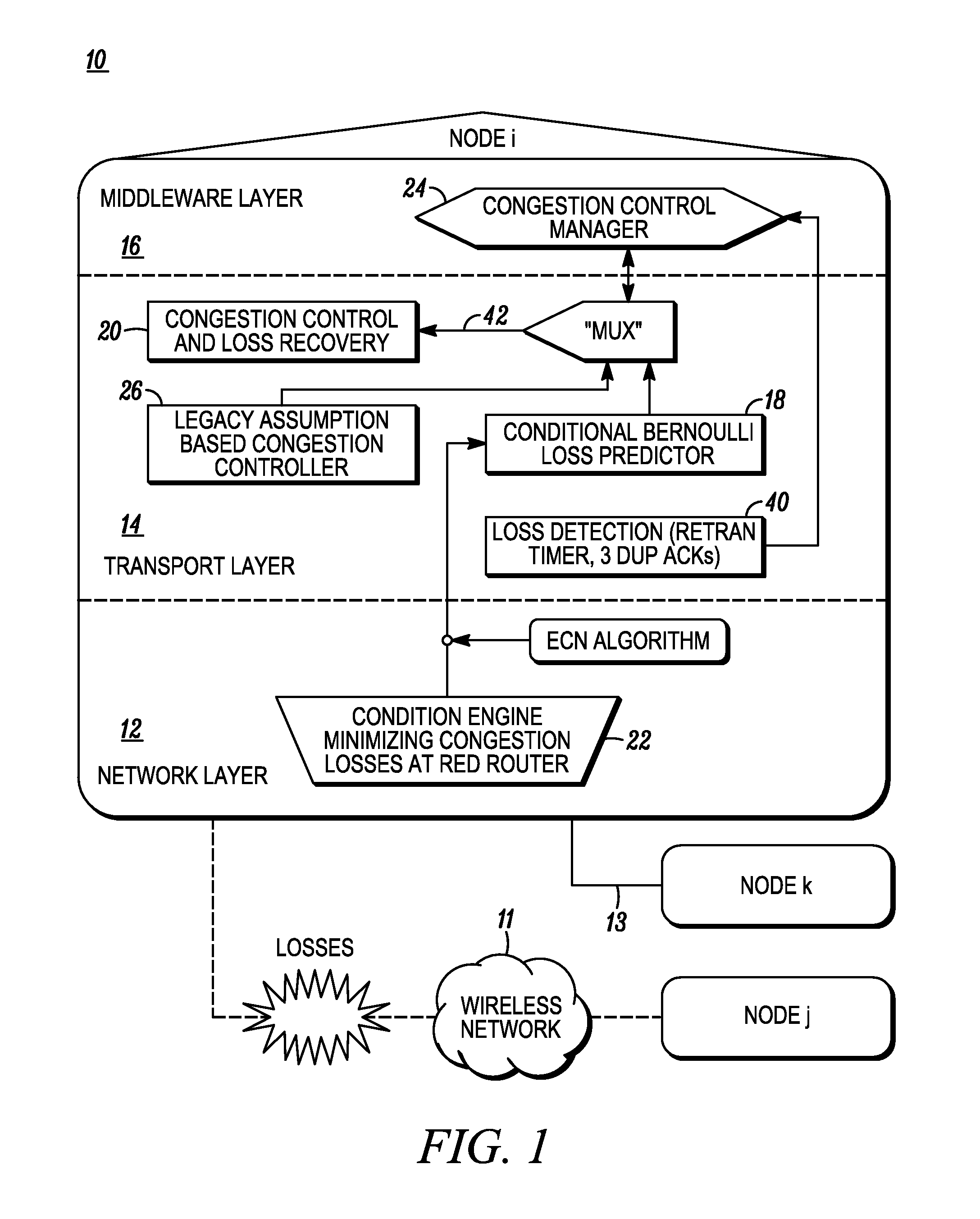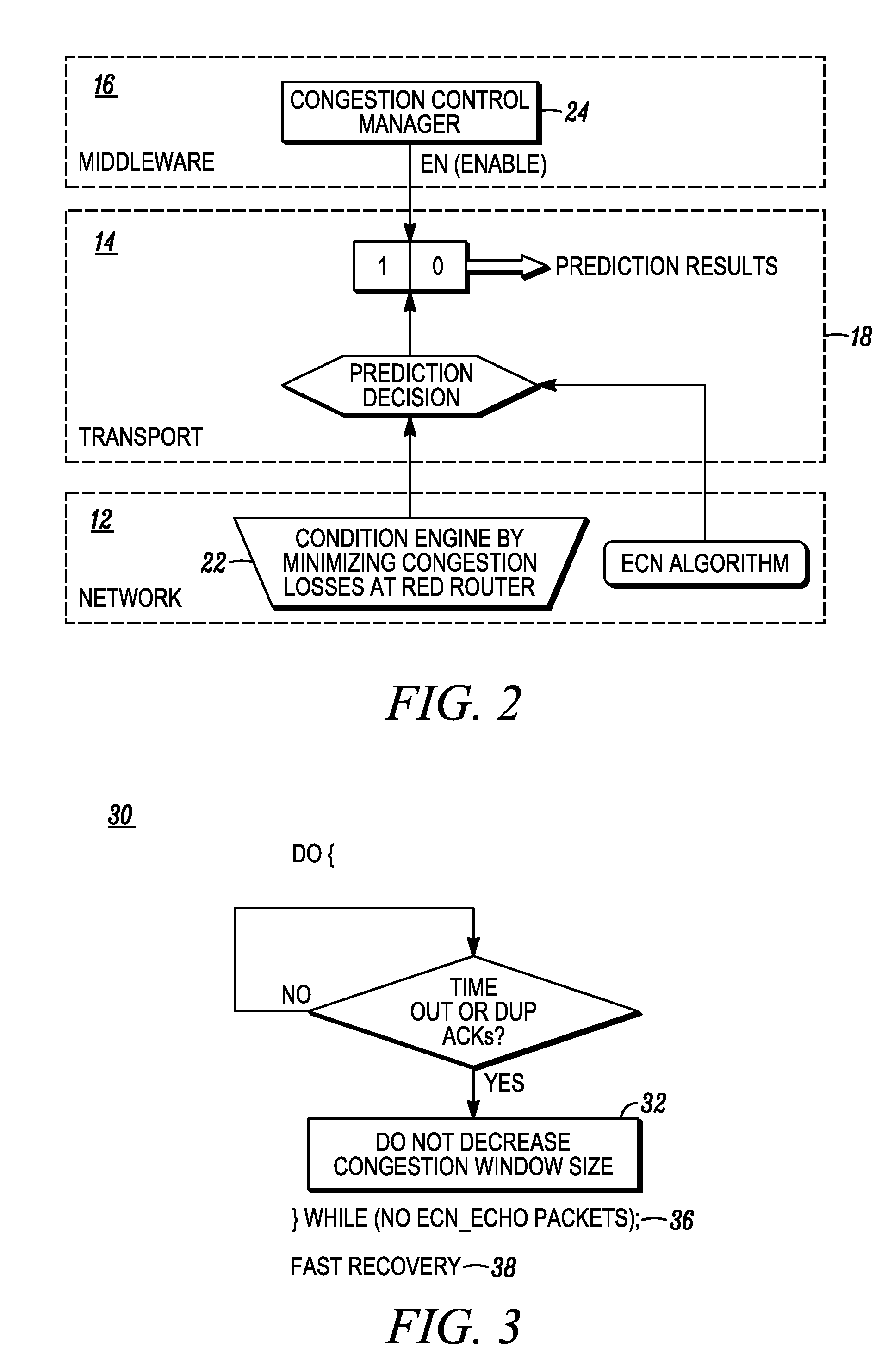Method and apparatus for minimizing congestion in gateways
a gateway and congestion technology, applied in the field of gateways, can solve problems such as loss of links, work against efficient data packet throughput, and reduce transmission speed
- Summary
- Abstract
- Description
- Claims
- Application Information
AI Technical Summary
Problems solved by technology
Method used
Image
Examples
Embodiment Construction
[0015]The following detailed description of the invention is merely exemplary in nature and is not intended to limit the invention or the application and uses of the invention. Furthermore, there is no intention to be bound by any theory presented in the preceding background of the invention or the following detailed description of the invention.
[0016]To overcome the detriments of legacy congestion control systems when applied to lossy (e.g., wireless) links characterized by high error rates, the present invention has modeled congestion window size for gateways to optimally size the congestion window to improve data throughput. The congestion management algorithum an system of the preferred embodiment is particularly useful when applied to speculative techniques (i.e., speculating on the outcome of branch predictions) for throughput improvements when lossy links are involved in TCP / IP connections. Thus, the present invention helps to eliminates the waste of bandwidth responding to l...
PUM
 Login to View More
Login to View More Abstract
Description
Claims
Application Information
 Login to View More
Login to View More - R&D
- Intellectual Property
- Life Sciences
- Materials
- Tech Scout
- Unparalleled Data Quality
- Higher Quality Content
- 60% Fewer Hallucinations
Browse by: Latest US Patents, China's latest patents, Technical Efficacy Thesaurus, Application Domain, Technology Topic, Popular Technical Reports.
© 2025 PatSnap. All rights reserved.Legal|Privacy policy|Modern Slavery Act Transparency Statement|Sitemap|About US| Contact US: help@patsnap.com



